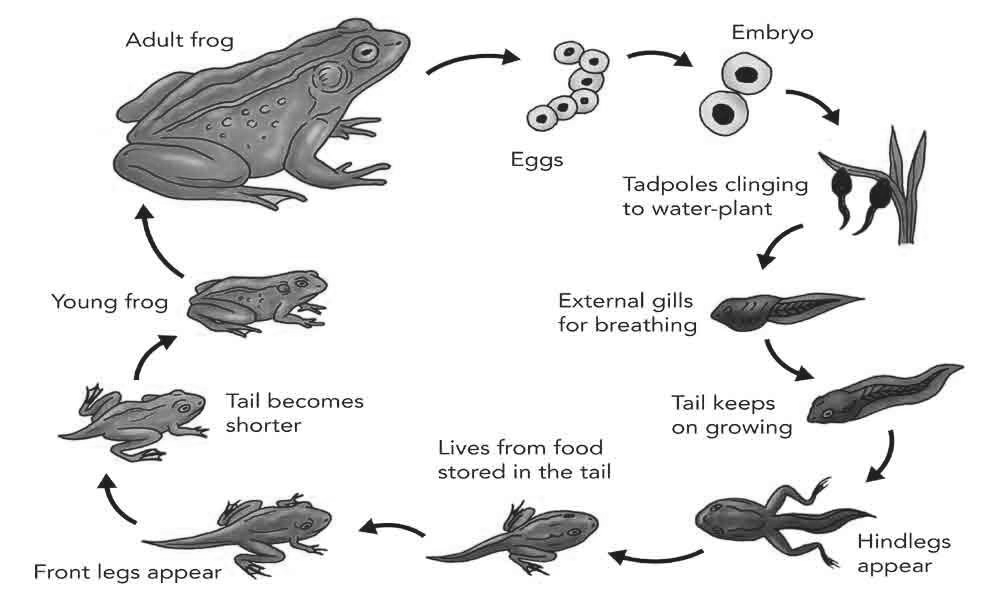Natural Process Diagrams: The Life-cycle of Frogs
WRITING TASK 1
You should spend 20 minutes on this task.
The diagram gives information about the life cycle of a frog.
Summarize the information by selecting and reporting the main features, and make comparisons where relevant.
Write at least 150 words.

The diagram illustrates a frog’s physical development. Overall, the life cycle is long and complex, consisting of 10 stages. It begins when an adult frog lays eggs and concludes when a young frog matures into a fully grown adult.
In the first half of the process, the frog begins life as a tadpole. First, the eggs develop into embryos with the undeveloped tadpole growing inside. When the tadpole is ready, it hatches from the embryo and clings to underwater plants. In the next stage, the tadpole develops gills, which allow it to breathe underwater, and its tail grows longer.
In the second half of the process, the tadpole begins to transition into a frog. Rear legs start to appear at the back of the animal’s body. Then, while sustaining itself on food stored in its tail, front legs begin to grow, and the tail begins to decrease in size. By this stage, the amphibian is more recognizable as a frog than in the previous stages. When the tail has completely vanished, the animal becomes a young frog. In the final stage, the young frog matures into an adult frog, ready to lay eggs and begin the process again.






Responses
Here you can provide helpful feedback, advice, and compliments about this report.
We suggest that you consider the following questions in your response...
Task Achievement
- Did the student summarize the diagram in the introduction?
- Did the student describe the key features of the stages?
- Did the student compare the stages if appropriate?
- Did the student describe the purpose or result or a stage?
- Did the student describe any items being used?
Coherence and Cohesion- Did the student use paragraphs and were the paragraphs logically ordered?
- Did each paragraph have a clear purpose?
- Did the student use a variety of linking language?
Grammatical Range and Accuracy- Did the student use appropriate tenses, clauses, and other structures?
- Were there any mistakes in the structures?
- Was there a variety of structures?
Lexical Resource